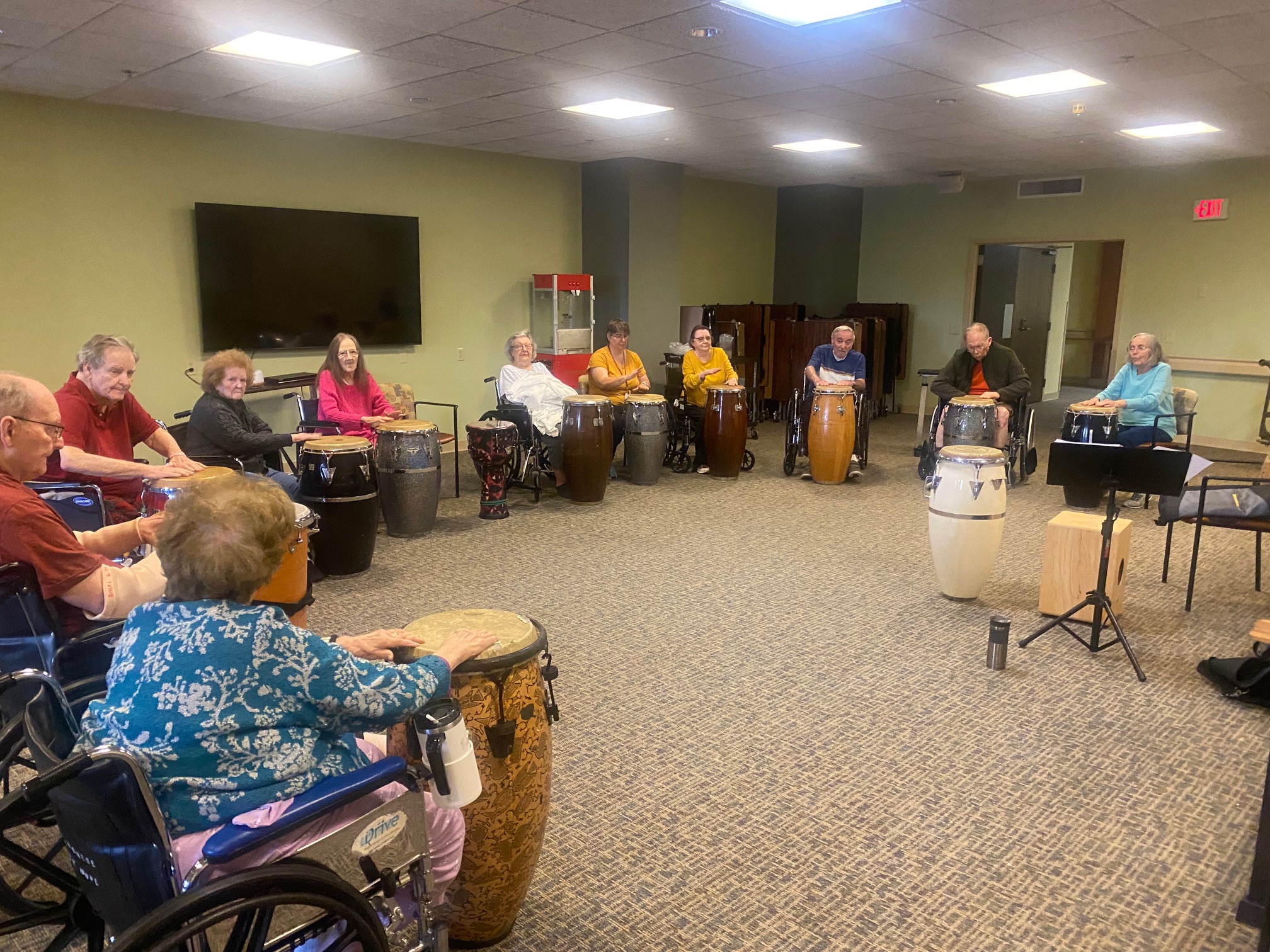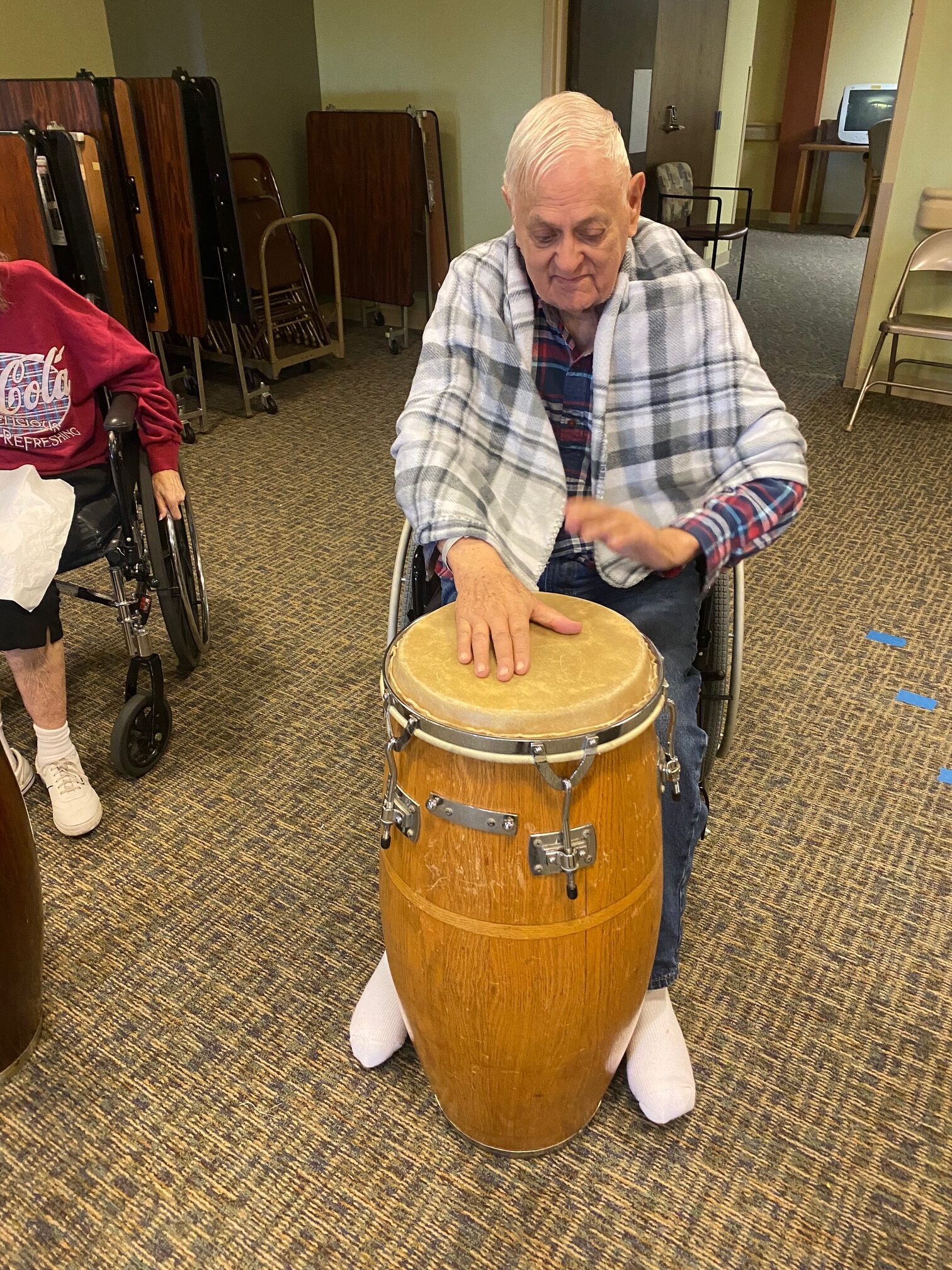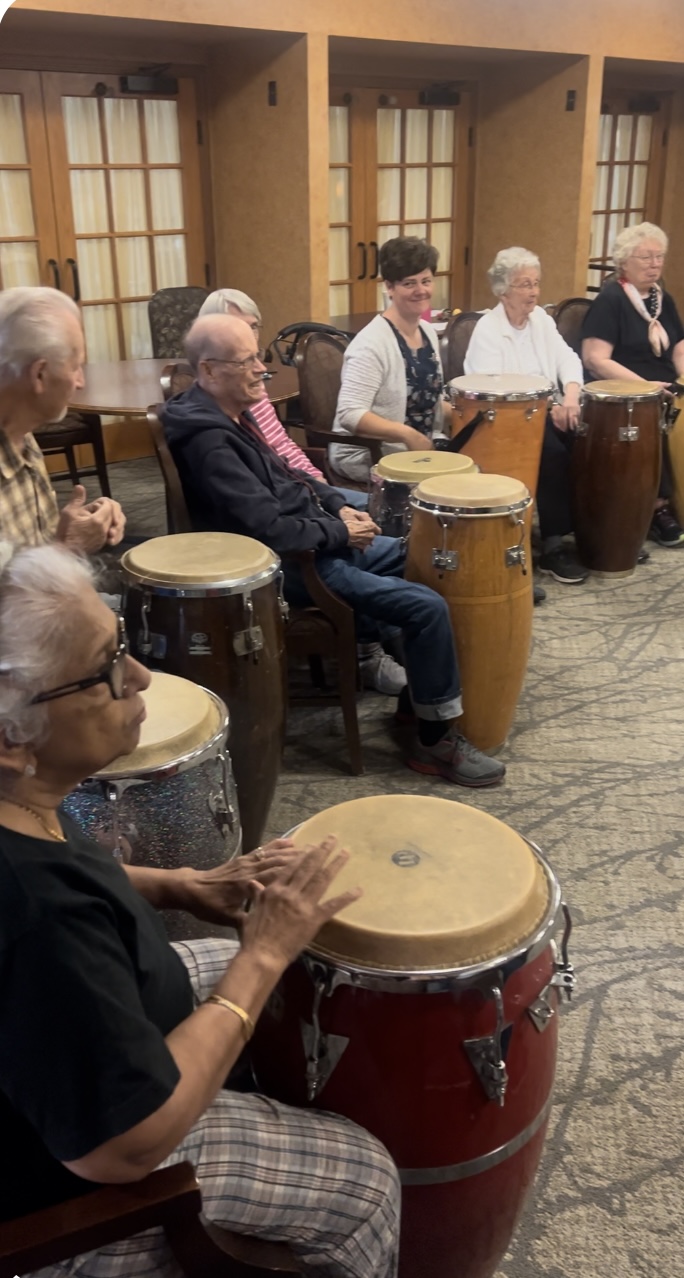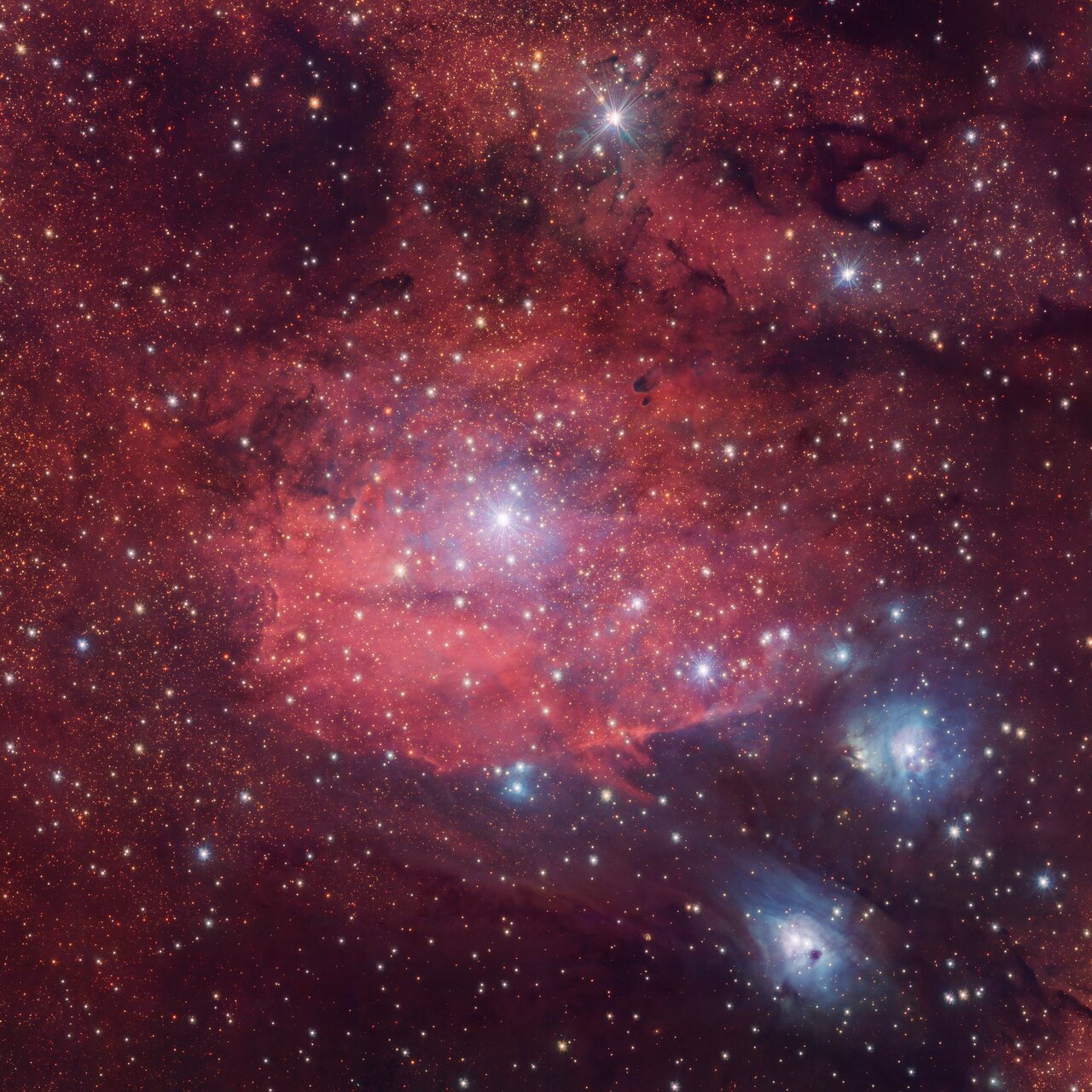Blog
Born October 5, 1935 in Greenville, MS
Died January 14, 1992 in Los Angeles, CA
Left Hand Frank was a fun loving, powerfully built bluesman who liked to amuse audiences in Chicago’s South Side blues clubs with comical Donald Duck imitations and muscle-flexing tricks. But what crowds enjoyed even more was the way Frank Craig played guitar. Employing a confident, four-fingered picking style, he played his axe upside down, like several other left-handed bluesmen, with the treble strings at the top. And he played some of the strongest, most distinctive vintage blues to be heard in Chicago.
Frank worked in countless bands during his nearly 40 years in Chicago. He was probably the best musician in most of those groups. But until 1978, Frank never played guitar or sang on a record. Frank found that it was more fun to be a sideman, and he never thought much about becoming a headliner or leading a band.
“Mainly, I don’t like to be worried with it,” Frank explained. “I’ve had quite a few jobs myself, but guys don’t want to act right. It’s too much of a headache. I’d switch over and put that headache on somebody else. I hate to have a headache.”
So Frank left the band leading headaches to bluesmen like Junior Wells, Little Walter, Hound Dog Taylor, and Willie Cobbs. Frank was happy just to play guitar or bass as part of someone else’s band.
When Frank started playing in his hometown of Greenville, Mississippi, he didn’t even have to worry about bands. He could stroll the streets, playing by himself to earn tips from passersby. He got his first guitar on his fourth birthday, October 5, 1939, and quickly learned both blues and country & western from older musicians who were always at his house buying homebrewed corn whiskey from Frank’s mother. Before moving to Chicago at the age of 14, young Frank performed at the local sheriff’s parties, at the local fairgrounds, and around the countryside, carrying his guitar with him on the bus and playing wherever people would pay to see such a child prodigy.
During the early ‘50s in Chicago, Frank was still a street and house party musician, too young to be allowed in the taverns. But he lived within a block of two blues clubs, The Zanzibar and Vi’s Lounge. Frank and two teenaged friends, guitarist Eddie King and bassist Willie Black, eagerly listened at the door whenever Muddy Waters, Little Walter, Memphis Slim or Howlin’ Wolf were performing. After some intense rehearsals, the trio started playing outside The Zanzibar and Vi’s, sharing wine and whiskey with the onlookers. “We’d have a bigger crowd outside than they did inside!” Frank would laugh.
Willie Cobbs, originator of the blues standard “You Don’t Love me,” hired the young bluesmen (who had boldly named themselves the Chicago All-Stars) to work with him in the West Side clubs and on the road. Jimmy Rogers and Lee Jackson let Frank sit in on bass at The Squeeze Club, and in the mid-‘50s, Frank began a long association with his steadiest employer, guitarist James Scott, Jr., at Joe’s 1015 Club on 43rd Street. There were also gigs with Jimmy Dawkins at The Pink Poodle, with Delta bluesman Boyd Gilmore in Pine Bluff, Arkansas, and with Good Rockin’ Charles at a West Side club where the crowds “barn danced” to Frank’s country breakdowns. In the ‘60s, Frank, who was working as a manual laborer during the daytime, played with Junior Wells, Junior Simpkins, Willie Williams, Carey Bell, Little Arthur Gray, Hound Dog Taylor, Little Walter and others, including Willie Cobbs and James Scott again at times. Frank recorded, as a bass player, on an Eddie King single in 1960 and on later sessions behind Morris Pejoe, Little Eddie Newell and Willie Williams.
Frank was just as active, and just as sought after by various bandleaders, in the ‘70s. He was a regular with Johnny Bernard’s group at Louise’s, Porter’s, and other South Side clubs, and continued to work on and off with James Scott. He was a familiar face at the famed Sunday afternoon jam sessions at Florence’s, where Hound Dog Taylor held forth for years. In the late ‘70s, Frank teamed up with two young white newcomers, Dimestore Fred and Pocketwatch Paul, who appeared on his recording debut on Alligator’s Living Chicago Blues series. Frank’s session proved him to be totally rooted in the raw, Delta-based Chicago style of the 1950s, bringing to mind his friends Magic Slim, Jimmy Rogers and Brewer Phillips.
In the 1980s, Frank moved to Los Angeles to live with his sister. His declining health and a series of surgeries led to his abandoning music, and he eventually died in California. An album of a live performance is still in print on a French label.
more...James Blanton (October 5, 1918 – July 30, 1942) was an American jazz double bassist. Blanton is credited with being the originator of more complex pizzicato and arco bass solos in a jazz context than previous bassists. Nicknamed “Jimmie,” Blanton’s nickname is usually misspelled as “Jimmy,” including by Duke Ellington.
Blanton was born in Chattanooga, Tennessee. His mother Gertrude was a well known music teacher in Chattanooga, and he spent much of his youth playing in bands led by her. He originally learned to play the violin, but took up the bass while at Tennessee State University, performing with the Tennessee State Collegians from 1936 to 1937, and during the vacations with Fate Marable.
Blanton began to show symptoms of tuberculosis. His condition progressively worsened through the fall of 1941, and in November he was forced to leave the band and seek full-time medical care. Blanton died on July 30, 1942, at a sanatorium in Duarte, California, aged 23.
more...
Delroy George Wilson CD (5 October 1948 – 6 March 1995) was a Jamaican ska, rocksteady and reggaesinger. Wilson is often regarded as Jamaica’s first child star, having first found success as a teenager. His youngest son, Karl “Konan” Wilson, has found success as part of British duo Krept and Konan.
Delroy Wilson began his recording career at the age of thirteen, while still a pupil at Boys Town Primary School. Wilson released his first single “Emy Lou” in 1962 for record producer, Clement “Coxsone” Dodd. His early years with Coxsone yielded a number of ska hits, the biggest of which, the Lee Perry-written “Joe Liges” was an attack on rival producer and former Dodd employee Prince Buster.
Delroy Wilson died at the age of 46 on 6 March 1995 at Kingston‘s UWI hospital, of complications from cirrhosis of the liver.
more...The nebula is known popularly as the Witch Head Nebula because, it is said, the nebula’s shape resembles a Halloween-style caricature of a witch’s head. Exactly how, though, can be a topic of imaginative speculation. What is clear is that IC 2118 is about 50 light-years across and made of gas and dust that points to — because it has been partly eroded by — the nearby star Rigel. One of the brighter stars in the constellation Orion, Rigel lies below the bottom of the featured image. The blue color of the Witch Head Nebula and is caused not only by Rigel’s intense blue starlight but because the dust grains scatter blue light more efficiently than red. The same physical process causes Earth’s daytime sky to appear blue, although the scatterers in planet Earth’s atmosphere are molecules of nitrogen and oxygen.

Amos Leon Thomas Jr. (October 4, 1937 – May 8, 1999), known professionally as Leon Thomas, was an American jazz and blues vocalist, born in East St. Louis, Illinois, and known for his bellowing glottal-stop style of free jazz singing in the late 1960s and 1970s.
Leon Thomas was born Amos Thomas, Jr. on October 4, 1937, in East St. Louis, Illinois. He studied music at Tennessee State University. At the time of his studies, he had begun a singing career as a guest vocalist for the jazz bands of percussionist Armando Peraza, saxophonist Jimmy Forrest, and guitarist Grant Green. His musical development at this time was shaped in part by seeing saxophonist John Coltrane perform in trumpeter Miles Davis‘s sextet during the late 1950s. Thomas moved to New York City in 1959, singing at the Apollo Theater as a vocalist for acts such as jazz ensemble The Jazz Messengers and singer Dakota Staton. In 1961, he joined the Count Basie Orchestra but soon left after being conscripted into the army.
more...Edgar Gómez (born October 4, 1944) is a Puerto Rican jazz double bassist, known for his work with the Bill Evans Trio from 1966 to 1977.
Gómez moved with his family from Puerto Rico at a young age to New York, where he was raised. He started on double bass in the New York City school system at the age of eleven and at age thirteen went to the New York City High School of Music & Art. He played in the Newport Festival Youth Band (led by Marshall Brown) from 1959 to 1961, and graduated from Juilliard in 1963.
He has played with musicians such as Gerry Mulligan, Marian McPartland, Paul Bley, Tania Maria, Steps Ahead, and Chick Corea. He spent a total of eleven years with the Bill Evans Trio, which included performances in the United States, Europe and Asia, as well as dozens of recordings.
His career mainly consists of working as an accompanist, a position suited for his quick reflexes and flexibility. In addition to working as a studio musician for many famous jazz musicians, he has recorded as a leader for Columbia Records, Projazz and Stretch. Many of his recent recordings as a leader are co-led by the jazz pianist Mark Kramer.
In May 2013, Gómez was awarded an Honorary Doctorate of Music from Berklee College of Music in Valencia, Spain. This was the first honorary doctorate granted at the college’s new international campus in Spain.
more...Steve Swallow (born October 4, 1940) is an American jazz bassist and composer, known for his collaborations with Jimmy Giuffre, Gary Burton, and Carla Bley. He was one of the first jazz double bassists to switch entirely to electric bass guitar.
Born in Fair Lawn, New Jersey, United States, Swallow studied piano and trumpet, as a child, before turning to the double bass at age 14. While attending a prep school, he began trying his hand in jazz improvisation. In 1960, he left Yale University, where he was studying composition, and settled in New York City, playing at the time in Jimmy Giuffre‘s trio along with Paul Bley. After joining Art Farmer‘s quartet in 1963, Swallow began to write. It is in the 1960s that his long-term association with Gary Burton‘s various bands began.
In the early 1970s, Swallow switched exclusively to electric bass guitar, of which he prefers the five-string variety. He was first introduced to the electric bass while doing a music trade show with Gary Burton and trying a Gibson EB-2. Along with Monk Montgomery and Bob Cranshaw, Swallow was among the first jazz bassists to do so (with much encouragement from Roy Haynes, one of Swallow’s favorite drummers). He plays with a pick (made of copper by Hotlicks), and his style involves intricate solos in the upper register. He was one of the early adopters of the high C string on a bass guitar.
From 1974 to 1976, Swallow taught at the Berklee College of Music. He contributed several of his compositions to the Berklee students who assembled the first edition of The Real Book. He later recorded an album, Real Book, with the picture of a well-worn, coffee-stained book on the cover.
In 1978, Swallow became a member of Carla Bley‘s band. He has been Bley’s romantic partner since the 1980s. He toured extensively with John Scofield in the early 1980s, and has returned to this collaboration several times over the years.
Swallow has consistently won the electric bass category in DownBeat yearly polls, both Critics’ and Readers’, since the mid-1980s. His compositions have been covered by, among others, Jim Hall (who recorded his very first tune, “Eiderdown”), Bill Evans, Chick Corea, Stan Getz and Gary Burton.
more...The rings of MyCn 18 trace the outline of an hourglass — although one with an unusual eye in its center. Either way, the sands of time are running out for the central star of this hourglass-shaped planetary nebula. With its nuclear fuel exhausted, this brief, spectacular, closing phase of a Sun-like star’s life occurs as its outer layers are ejected – its core becoming a cooling, fading white dwarf. In 1995, astronomers used the Hubble Space Telescope (HST) to make a series of images of planetary nebulae, including the one featured here. Pictured, delicate rings of colorful glowing gas (nitrogen-red, hydrogen-green, andoxygen-blue) outline the tenuous walls of the hourglass. The unprecedented sharpness of the Hubble images has revealed surprising details of the nebula ejection process that are helping to resolve the outstanding mysteries of the complex shapes and symmetries of planetary nebulas like MyCn 18.

Stephen Michael Reich born October 3, 1936) is an American composer known for his contribution to the development of minimal music in the mid to late 1960s. Reich’s work is marked by its use of repetitive figures, slow harmonic rhythm, and canons. Reich describes this concept in his essay, “Music as a Gradual Process”, by stating, “I am interested in perceptible processes. I want to be able to hear the process happening throughout the sounding music.” To do so, his music employs the technique of phase shifting, in which a phrase is slightly altered over time, in a flow that is clearly perceptible to the listener.
His innovations include using tape loops to create phasing patterns, as on the early compositions It’s Gonna Rain(1965) and Come Out (1966), and the use of simple, audible processes, as on Pendulum Music (1968) and Four Organs (1970). The 1978 recording Music for 18 Musicians would help entrench minimalism as a movement.Reich’s work took on a darker character in the 1980s with the introduction of historical themes as well as themes from his Jewish heritage, notably Different Trains (1988).
Reich’s style of composition has influenced many contemporary composers and groups, especially in the United States. Writing in The Guardian, music critic Andrew Clements suggested that Reich is one of “a handful of living composers who can legitimately claim to have altered the direction of musical history”. Reich was born in New York City to Jewish parents, the Broadway lyricist June Sillman and Leonard Reich. When he was one year old, his parents divorced, and Reich divided his time between New York and California. He is the half-brother of writer Jonathan Carroll.
more...Chubby Checker (born Ernest Evans; October 3, 1941) is an American singer and dancer. He is widely known for popularizing many dance styles, including the Twist dance style, with his 1960 hit cover of Hank Ballard & The Midnighters‘ R&B song “The Twist“, and the pony dance style with the 1961 cover of the song “Pony Time“. His biggest UK hit, “Let’s Twist Again“, was released one year later (in 1962); that year, he also popularized the song “Limbo Rock“, originally a previous-year instrumental hit by the Champs to which he added lyrics, and its trademark Limbo dance, as well as other dance styles such as The Fly. In September 2008, “The Twist” topped Billboard‘s list of the most popular singles to have appeared in the Hot 100 since its debut in 1960, an honor it maintained for an August 2013 update of the list.[1]
Checker was born Ernest Evans in Spring Gully, South Carolina
https://www.youtube.com/watch?v=VM3gKfCk6Dg
more...Earle Lavon “Von” Freeman Sr. (October 3, 1923 – August 11, 2012) was an American hard bop jazz tenor saxophonist.
Born in Chicago, Illinois, to parents George Freeman and Earle née Granberry Freeman, he was exposed as a young child to jazz. His father, George, a city policeman, was a close friend of Louis Armstrong with Armstrong living at the Freeman house when he first arrived in Chicago.
Freeman’s father taught him to play piano and bought him his first saxophone when he was seven. His musical education was furthered at DuSable High School, where his band director was Walter Dyett. Freeman began his professional career at the age of 16 in Horace Henderson‘s Orchestra.
Freeman enlisted into the Navy during World War II and was trained at Camp Robert Smalls in Chicago. “All the great musicians ended up at Great Lakes”, he recalled. “It was an incubator for the best and the brightest lights in the jazz world at that time, and the musical jam sessions were simply phenomenal.” After training, he was sent to Hawaii as part of the Hellcats stationed at Barbers Point Naval Air Station in a band that starred Harry “Pee Wee” Jackson, the trumpeter from Cleveland whose nickname was Gabriel. The Hellcats were frequent winners of the islands’ competitive Battle of the Bands competitions and included musicians who had formerly played in bands fronted by Duke Ellington, Fletcher Henderson, Ella Fitzgerald, Lucky Millinder, Les Hite, Count Basie, Fats Waller, and Tiny Bradshaw.
more...Stephen Ray Vaughan (also known as SRV; October 3, 1954 – August 27, 1990) was an American musician, best known as the guitarist and frontman of the blues rock trio Stevie Ray Vaughan and Double Trouble. Although his mainstream career spanned only seven years, he is regarded as one of the most influential musicians in the history of blues music, and one of the greatest guitarists of all time. He was the younger brother of guitarist Jimmie Vaughan.
Born and raised in Dallas, Vaughan began playing guitar at age seven, initially inspired by his elder brother, Jimmie Vaughan. In 1972, he dropped out of high school and moved to Austin, where he began to gain a following after playing gigs on the local club circuit. Vaughan joined forces with Tommy Shannon on bass and Chris Layton on drums as Double Trouble in 1978 and established it as part of the Austin music scene; it soon became one of the most popular acts in Texas. He performed at the Montreux Jazz Festival in 1982, where David Bowie saw him play. Bowie contacted him for a studio gig that resulted in Vaughan playing blues guitar on the album Let’s Dance (1983), before being discovered by John Hammond who interested major label Epic Records in signing Vaughan and his band to a record deal. Within months, they achieved mainstream success for the critically acclaimed debut album Texas Flood. With a series of successful network television appearances and extensive concert tours, Vaughan became the leading figure in the blues revival of the 1980s. Playing his guitar behind his back or plucking the strings with his teeth as Jimi Hendrixdid, he earned fame in Europe, which later resulted in breakthroughs for guitar players like Robert Cray, Jeff Healey, Robben Ford, and Walter Trout, amongst others.
During the majority of his life, Vaughan struggled with alcoholism and drug addiction. He also struggled with the personal and professional pressures of fame and his marriage to Lenora “Lenny” Bailey. He successfully completed rehabilitation and began touring again with Double Trouble in November 1986. His fourth and final studio album In Step reached number 33 in the United States in 1989; it was one of Vaughan’s most critically and commercially successful releases and included his only number-one hit, “Crossfire”. He became one of the world’s most highly demanded blues performers, and he headlined Madison Square Garden in 1989 and the Beale Street Music Festival in 1990.
On August 27, 1990, Vaughan and four others were killed in a helicopter crash in East Troy, Wisconsin, after performing with Double Trouble at Alpine Valley Music Theatre. An investigation concluded that the cause of the accident was pilot error and Vaughan’s family later filed a wrongful death lawsuit against Omniflight Helicopters which was settled out of court. Vaughan’s music continued to achieve commercial success with several posthumous releases and has sold over 15 million albums in the United States alone. In 2003, David Fricke of Rolling Stone ranked him the seventh greatest guitarist of all time. Vaughan was posthumously inducted into the Rock and Roll Hall of Fame in 2015, along with Double Trouble bandmates Chris Layton, Tommy Shannon, and Reese Wynans.
more...


There are two different types of nebulae brought to you in this Picture of the Week. Each appears with a distinct colour in the visible sky and are captured here using the wide-field camera OmegaCAM on the VLT Survey Telescope (VST), hosted at ESO’s Paranal Observatory in the Chilean desert.
The large, bright emission nebula at the centre, IC1284, is a star-forming region composed primarily of hydrogen. Its rosy glow comes from electrons within the hydrogen atoms: they’re excited by the radiation from young stars, but then they lose energy and emit a specific colour or wavelength of light. One of the filters on OmegaCAM lets through this particular reddish colour, hence the nebula’s look. Meanwhile, another colour filter highlights the blue reflection nebulae NGC6589 and NGC6590 in the lower right corner. The dust in a reflection nebula preferentially scatters shorter, bluer wavelengths of light from nearby stars, which is what gives these nebulae their eerie glow. It’s the same reason why the sky is blue!
The frame of this image covers an area roughly equivalent in the sky to a full Moon. This image was captured as part of a large ESO public survey, the VST Photometric H alpha Survey of the Southern Galactic Plane and Bulge (VPHAS+), which observes nebulae and stars in visible light to help astronomers understand how stars are born, live and die.

More Posts
- World Music with Sabah Traditional Music
- Daily Roots with Ta-Teasha Love
- The Cosmos with NGC 4647
- Derrick “Duckie” Simpson
- Jeff Beck Day
- Frank Lowe Day
- World Music with Oumar Konate
- Daily Roots with Carol Kalphat & Clint Eastwood
- Your Community Band performing Summer Fest @ East Phillips Park 6-23-19
- The Cosmos with M58
- Sahib Shihab Day
- George Russell Day
- Milt Hinton Day
- World Music with Kaveh Sarvarian
- Daily Roots with Freddy McKay
- The Cosmos with NGC 628
- Hermeto Pascoal Day
- Kris Kristofferson Day
- Ray Mantilla Day
- World Music with Asmâa Hamzaoui & Bnat Timbouktou